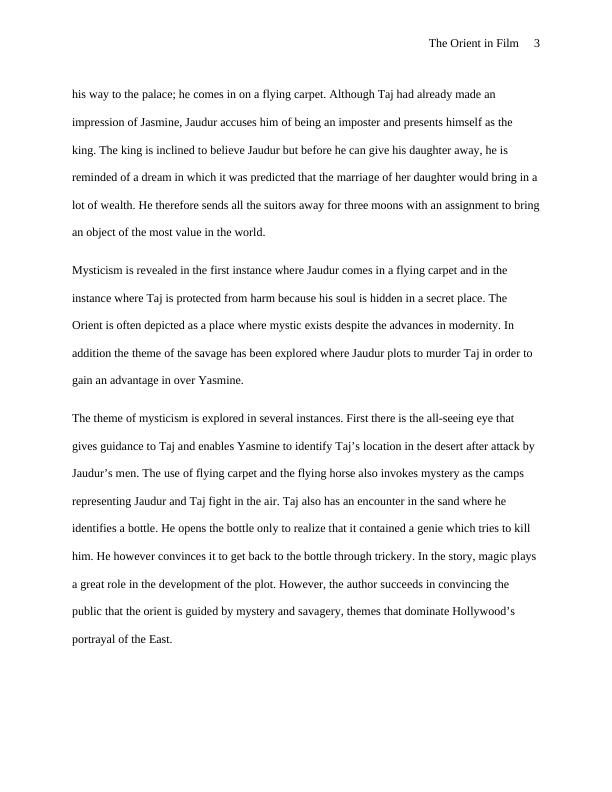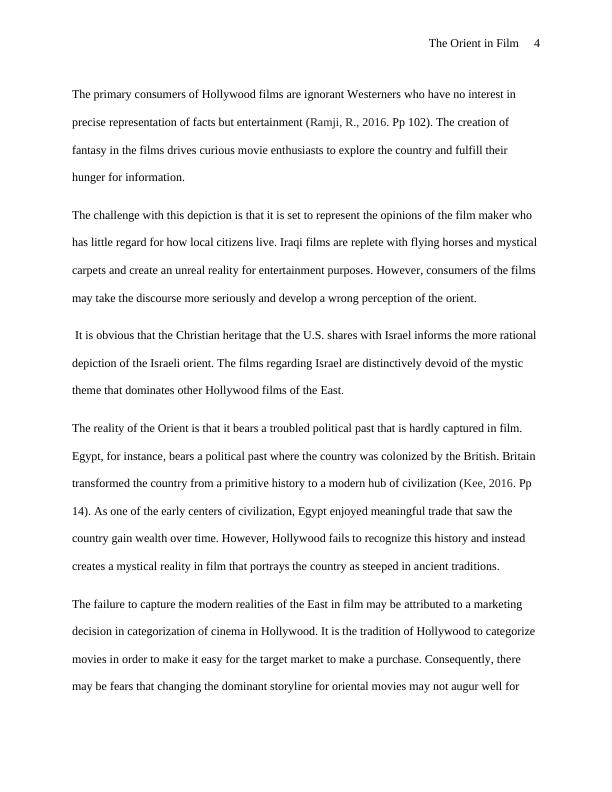The Orient in Film: Hollywood and Disney's Depiction of the East
The lecture discusses the concept of representation, the centrality of language and culture, theories and systems of representation, otherness and difference, and the application of postcolonial theory in representing others.
11 Pages3042 Words487 Views
Added on 2023-06-04
About This Document
This paper explores Hollywood and Disney's depiction of the Orient in film, focusing on themes of mysticism, wonder, and savagery. It discusses the impact of these depictions on the larger community and the benefits and disadvantages of Hollywood's Orientalism.
The Orient in Film: Hollywood and Disney's Depiction of the East
The lecture discusses the concept of representation, the centrality of language and culture, theories and systems of representation, otherness and difference, and the application of postcolonial theory in representing others.
Added on 2023-06-04
ShareRelated Documents
End of preview
Want to access all the pages? Upload your documents or become a member.




